| Medically reviewed by
Robin Backlund, BHSc
Last update:
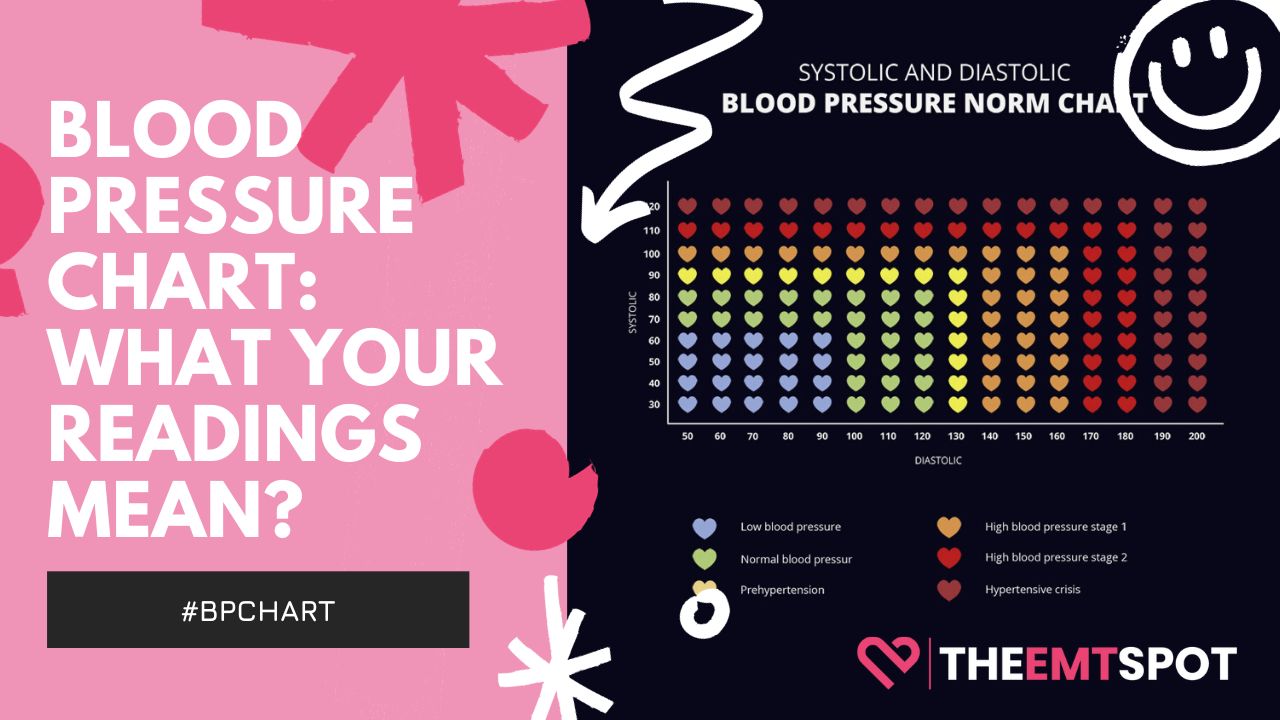
Blood pressure, defined as the force exerted by the blood against the walls of the arteries during circulation, stands as a beacon in the realm of health indicators.
To guide individuals on this health journey, the American Heart Association has crafted a detailed blood pressure chart. This chart is prepared after referring to multiple clinical and non-clinical studies.
Notably, the chart refers to a 2018 study published by Muntner et al., published in the Journal of Hypertension by AHA, according to which the blood pressure benchmarks should account for ambulatory as well as at-home variations.
Below are the latest blood pressure ranges.
STAGE (Clinical Term) | SYSTOLIC mm Hg [upper #] | DIASTOLIC mm Hg [lower #] | |
NORMAL BP | Less than 120 | and | Less than 80 |
PRE-HYPERTENSION (Elevated Blood Pressure) | 120-129 | and | Less than 80 |
HIGH BP (Hypertension STAGE 1) | 130-139 | or | 80-89 |
HIGH BP (Hypertension STAGE 2) | 140-180 | or | 90-120 |
VERY HIGH BP (Hypertensive Crisis) | Higher than 180 | and/ or | Higher than 120 |
The chart helps patients talk with doctors and understand their treatment options. Basically, a blood pressure chart is important for raising awareness and improving heart health management.
It’s worth noting that the table above doesn’t mention low blood pressure, which can also be treated as an emergency at times.
As it turns out, critically low blood pressure is less common compared to hypertension, and the body typically provides alerts before it becomes fatal.
One of the notable changes from the previous version is that AHA has redefined 130/80 mmHg as the new threshold for high blood pressure, replacing the previous benchmark of 140/90 mmHg.
This revision was made after clinical observations revealed that the manifestations of high blood pressure began to occur at the lower threshold of 130/80 mmHg.
Dr. Paul K. Whelton, M.B., M.D., M.Sc., the principal author behind the guidelines featured in both the American Heart Association journal, Hypertension, and the Journal of the American College of Cardiology, emphasized the risks associated with blood pressure readings that range between 130-139/80-89 mmHg.
Drawing attention to the gravity of such readings, he remarked.
“At these levels, you’ve essentially doubled the risk of cardiovascular complications relative to individuals with normal blood pressure.”
Dr. Whelton continued.
“Our aim is to be forthright. Recognizing this doubling in risk is crucial. It doesn’t necessarily prescribe medication, but it certainly raises a cautionary flag, urging individuals to focus on non-pharmacological measures to reduce their blood pressure.”
While medications are the primary mode of treatment, in less critical stages doctors might ask patients to adopt lifestyle changes, which could even fix your blood pressure problem without medical intervention.
Blood pressure is measured using a sphygmomanometer, which consists of an inflatable cuff and a measurement device. The cuff is wrapped around the upper arm and inflated, restricting blood flow.
As the cuff deflates, the device measures the pressure exerted on the artery walls, giving readings for systolic (maximum pressure) and diastolic (minimum pressure).
When we delve into the question of how this vital metric is measured, devices like the Oxiline Pressure X Pro and CheckMe BP2 emerge as important names, which are also discussed in this article.
Its importance is so paramount that many health enthusiasts and professionals alike advocate for a downloadable /a printable version which you can find at the end of this article.
Contents
How to read a blood pressure chart?
Reading blood pressure entails noting two numbers on your blood pressure monitor, each representing different aspects of your cardiovascular function.
These two numbers are typically separated by a slash, for instance, 120/80 mmHg.
The first number is referred to as systolic blood pressure, and the second number is known as diastolic blood pressure.
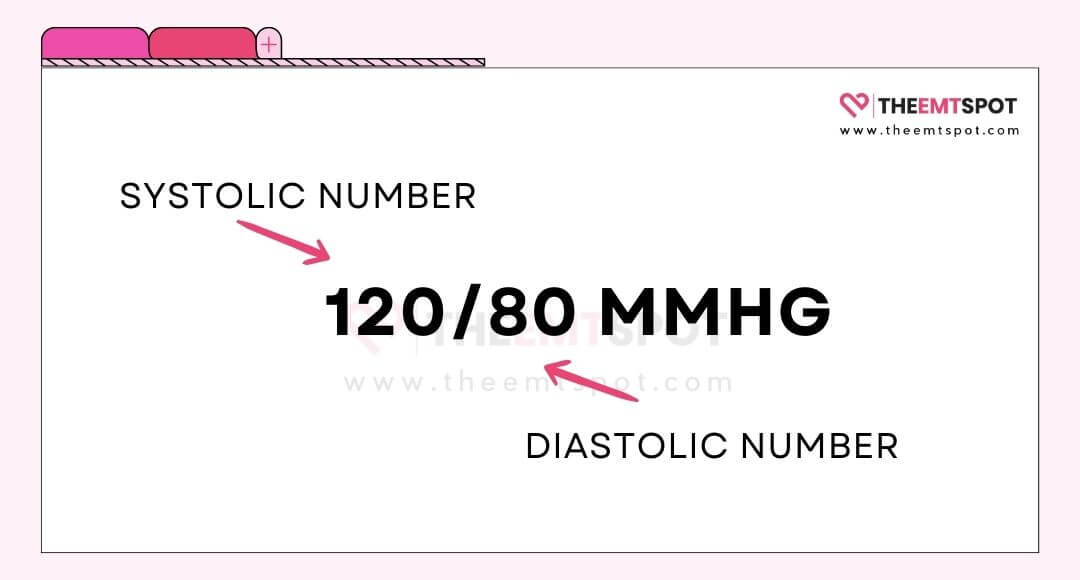
Understanding these numbers is crucial as they provide insightful information regarding your heart health, aiding in early detection and management of potential cardiovascular issues.
Let’s try to understand more about systolic and diastolic readings and how they differ from each other.
What is the difference between systolic and diastolic blood pressure?
The difference between systolic and diastolic blood pressure is that systolic refers to the highest pressure when the heart contracts and pumps blood, while diastolic represents the lowest pressure when the heart relaxes between beats.
When you measure your blood pressure, you’ll see two numbers, like 120/80 mmHg. These are systolic and diastolic pressures, which help you understand your heart’s work.
- Systolic, the higher number, measures the pressure during heartbeats. Normal is below 120 mmHg. High systolic pressure suggests heart strain.
- Diastolic, the lower number, measures pressure when the heart is at rest. Normal is below 80 mmHg and shows artery relaxation.
A team of researchers from Tulane University, in their article “High Blood Pressure and Cardiovascular Disease” published in the Journal of Hypertension, highlights that abnormal blood pressure readings, whether high or low, in systolic or diastolic measurements, can signal potential health issues.
Thus, it is crucial to understand that both systolic and diastolic are important, contrary to the popular belief that only the higher number, or systolic, matters.
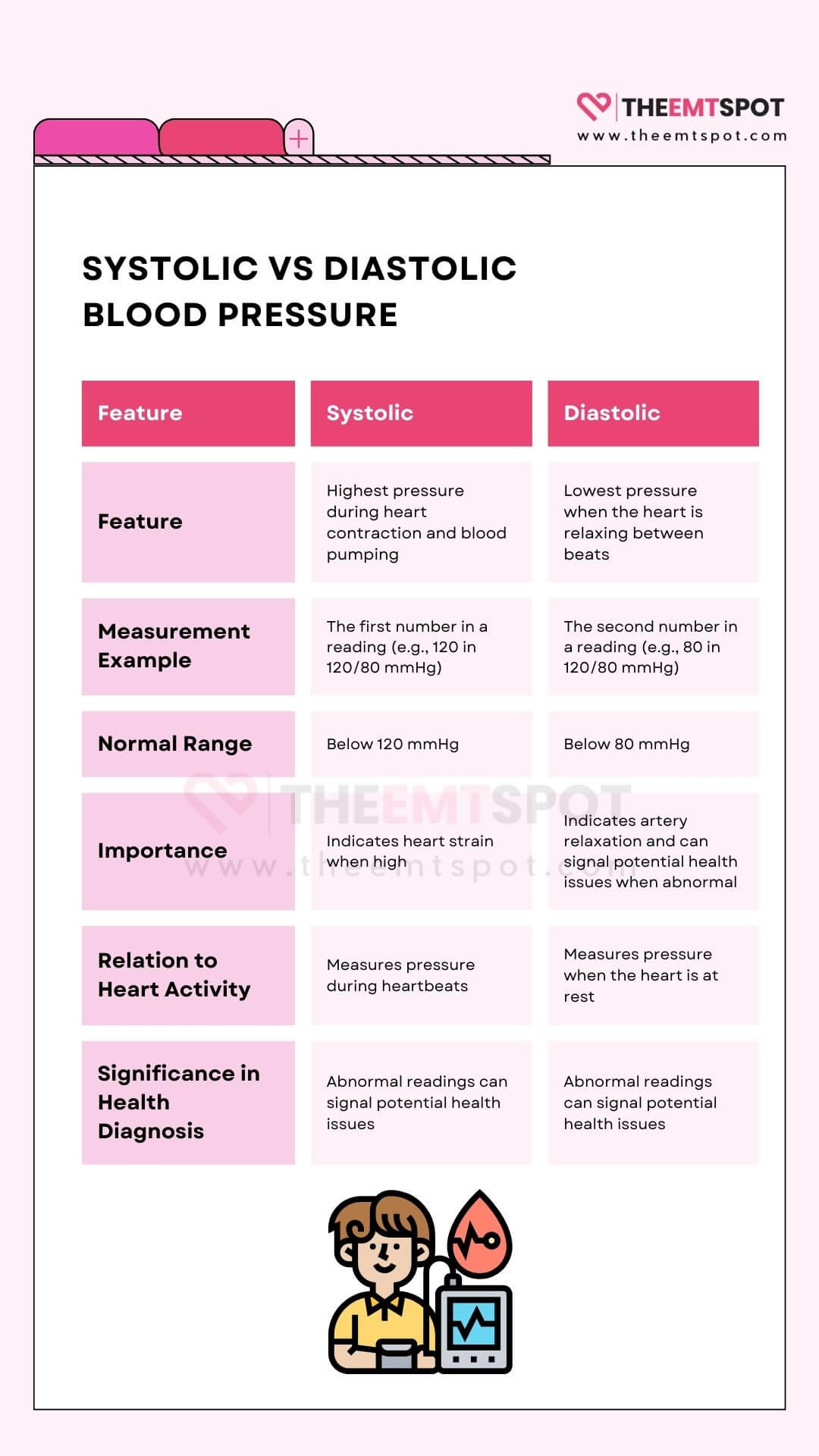
You can learn more about systolic vs diastolic from the link, which will help you have a better understanding of how your heart works and what each reading tells you.
You might have noticed systolic and diastolic values mentioned in mmHg, and it is the popular metric to gauge blood pressure, and understanding it can help you grasp heart health better.
What is the meaning of mmHg in blood pressure readings?
The term mmHg stands for millimeters of mercury and is a unit of measurement used to express blood pressure.
In an Elsevier book “Cardiology Clinic”, Dr. Gbenga Ogedegbe and Dr. Thomas Pickering discuss the historical use of mercury sphygmomanometers as the gold standard in clinical blood pressure measurement thus making mmHg popular.
MmHg represents the height to which the pressure in the blood vessels can push a column of mercury in a manometer or sphygmomanometer, which are devices used to measure blood pressure.
When a blood pressure reading is taken, two pressure levels are measured: systolic (the pressure during a heartbeat) and diastolic (the pressure between heartbeats).
These measurements are typically recorded as one number over the other (e.g., 120/80 mmHg) with both values represented in millimeters of mercury.
This unit provides a standardized measurement for healthcare providers to evaluate and monitor blood pressure levels, helping to diagnose and manage cardiovascular conditions.
But Pascal (Pa) is the typical SI (International System of Units) unit of pressure, and kPa is very widely used in pressure-related contexts. So, are kPa and mmHg the same, or are they connected?
Is kPa the same as mmHg when measuring blood pressure?
No, kPa (kilopascals) and mmHg (millimeters of mercury) are not the same, but they are both units of pressure used to measure blood pressure.
In a 2004 publication by Gianfranco Parati and their team in their paper “Blood pressure measurement in research and in clinical practice: recent evidence”, question why kPa can’t be a unit of blood pressure, while mmHg was relevant for mercury sphygmomanometers.
The conversion between these units is defined as 1 mmHg equals approximately 0.133 kPa.
When measuring blood pressure, it’s common to see the measurement in mmHg, especially in clinical settings, but kPa might be used in scientific or engineering contexts.
To convert a blood pressure reading from mmHg to kPa, you would multiply the mmHg value by 0.133. Conversely, to convert from kPa to mmHg, you would divide the kPa value by 0.133 or multiply it by 7.501.
For instance, a blood pressure reading of 120/80 mmHg is equivalent to approximately 15.99/10.66 kPa.
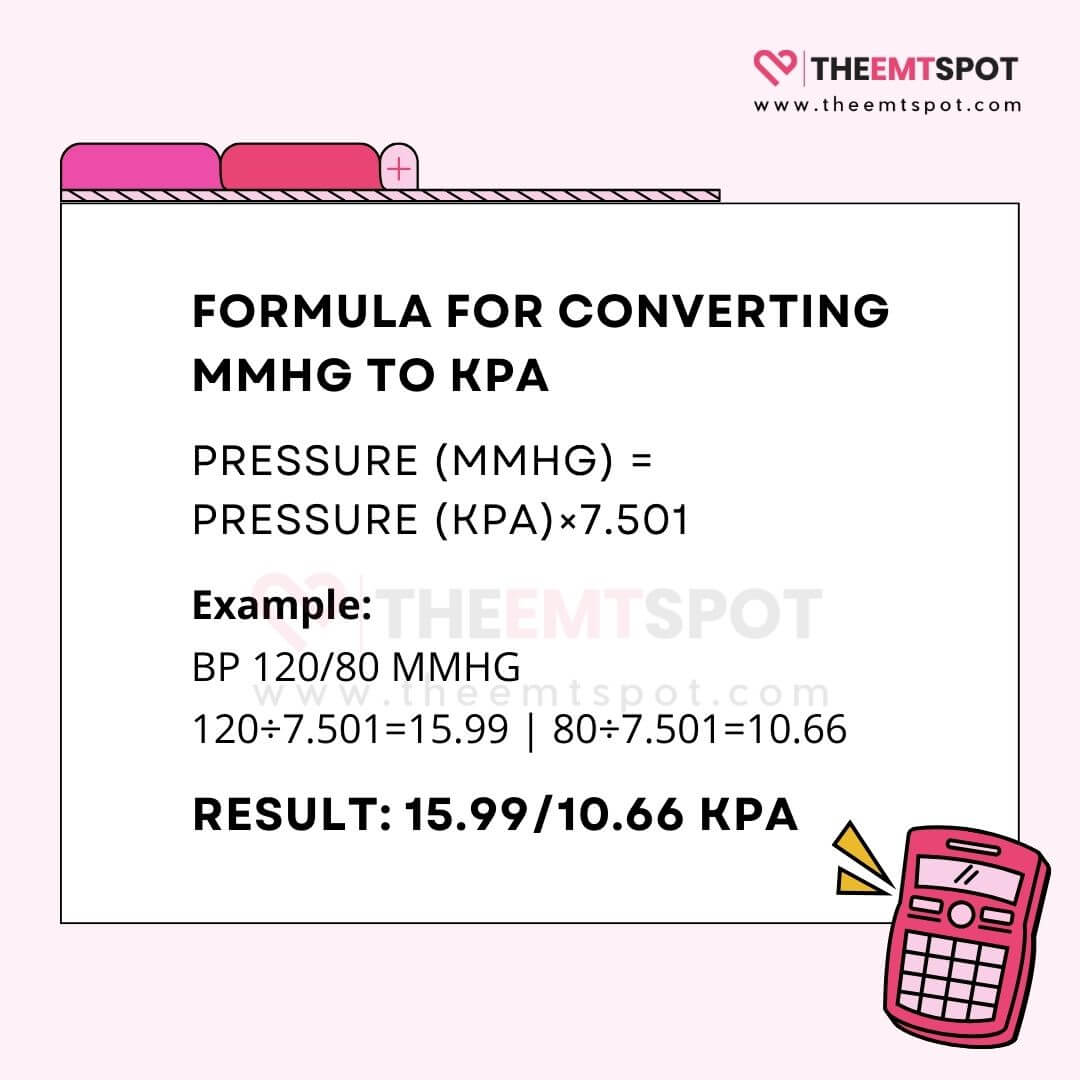
It’s essential to be aware that blood pressure is generally not measured in kPa and you won’t find any clinically accurate devices that measure in kPa. MmHg is the global standard for notating blood pressure values.
What are the blood pressure ranges?
Blood pressure ranges are categorized by the American Heart Association into five distinct levels to assist individuals and healthcare providers in assessing cardiovascular health.
These ranges include Normal, Elevated, High Blood Pressure (Hypertension) Stage 1, High Blood Pressure (Hypertension) Stage 2, and Hypertensive Crisis.
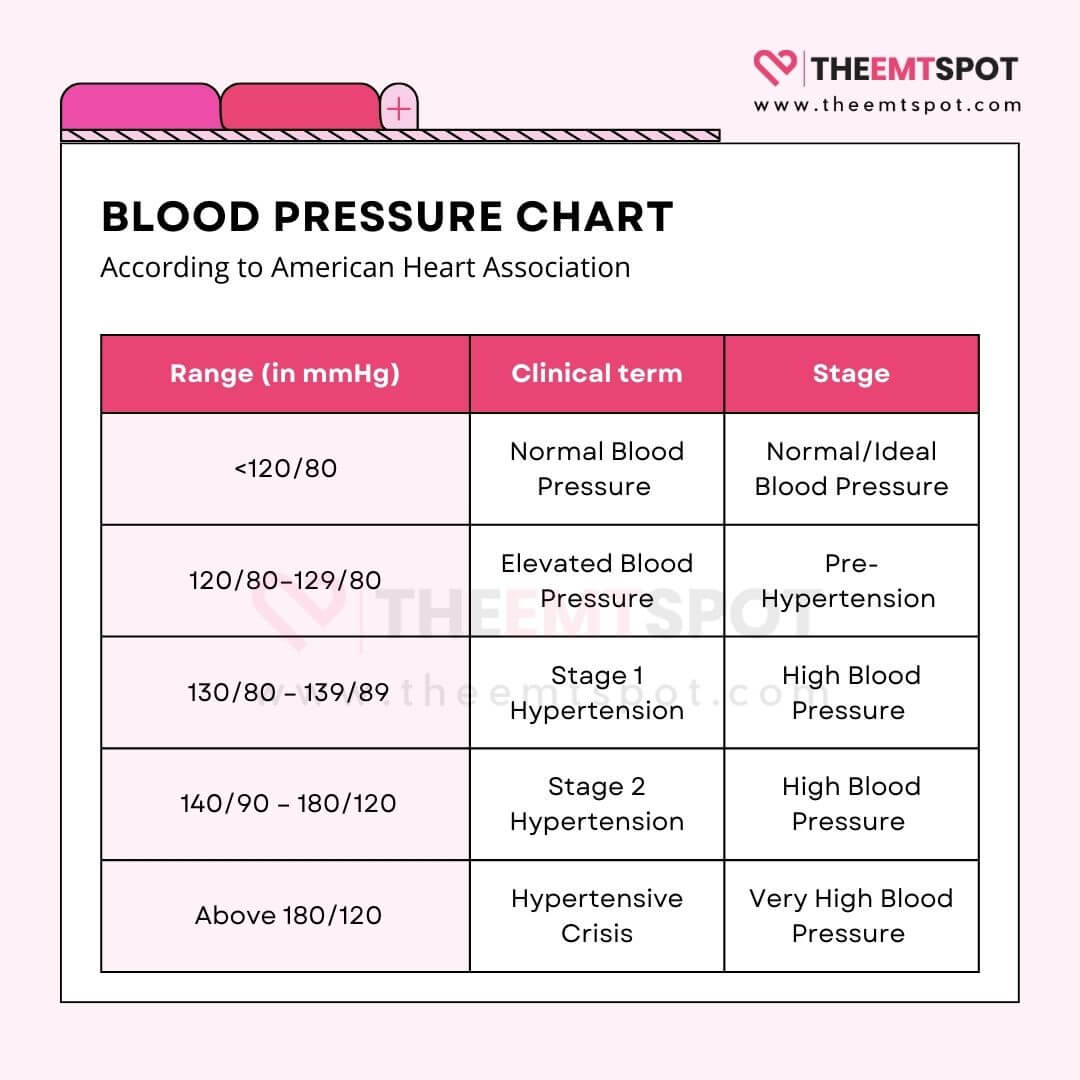
While the above are standard classifications, in clinical aspects, the blood pressure is further categorized into hypotension and severe for the doctors to evaluate and assess the cardiac health of the patient.
Below we are discussing in detail each of these classifications and their implications on your heart health.
- Very Low Blood Pressure (Severe Hypotension)
- Low Blood Pressure (Hypotension)
- Normal Blood Pressure
- Elevated Blood Pressure (Prehypertension)
- High Blood Pressure (Stage 1 Hypertension)
- High Blood Pressure (Stage 2 Hypertension)
- Hypertensive Crisis
Very Low Blood Pressure (Severe Hypotension)
Very Low Blood Pressure, also known as Severe Hypotension, refers to a condition where the blood pressure levels drop significantly below the normal range, which can impair the adequate blood flow to the body’s vital organs.
While this is a cardiac emergency, a common threshold mentioned is a blood pressure reading lower than 80/50 mmHg.
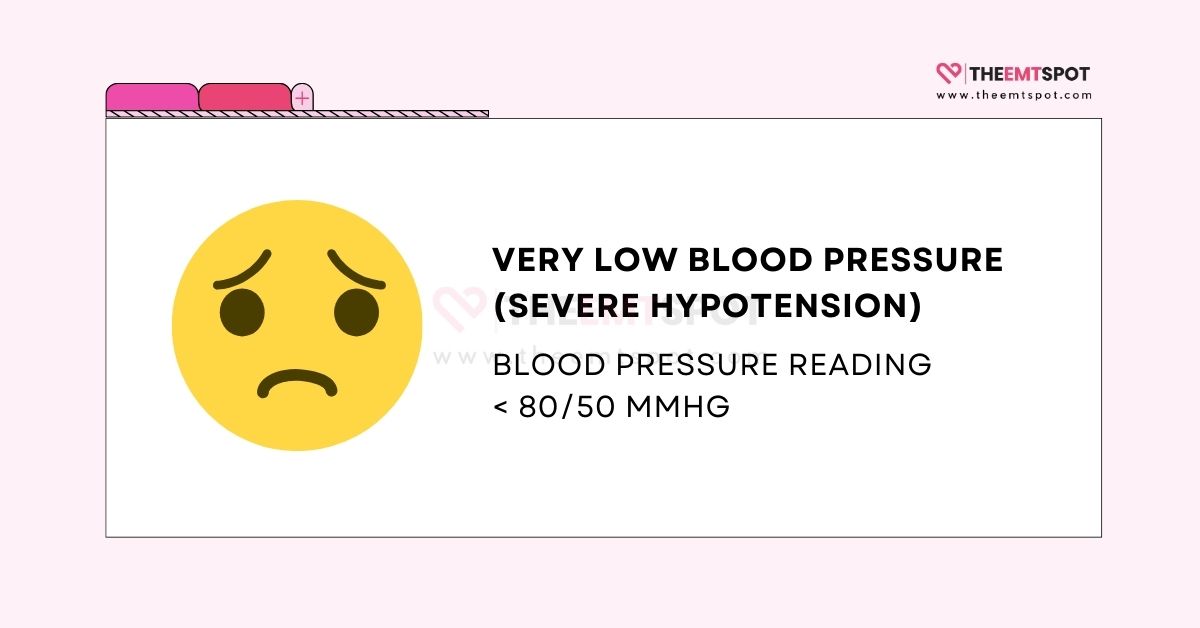
Key aspects regarding severe hypotension are mentioned below for understanding.
- Causes: It can be caused by various factors including dehydration, severe blood loss, certain medical conditions like heart disease, endocrine disorders, or sepsis, and some medications.
- Symptoms: Common symptoms include dizziness, fainting, fatigue, nausea, blurred or narrowing vision, and lack of concentration.
- Dangers: Severe hypotension can be life-threatening if not treated promptly as it can result in insufficient blood flow to the heart, brain, and other vital organs. Call 911 immediately, as it is considered critical.
- Treatment: Treatment may include medication, dietary modifications, and addressing underlying medical conditions. The exact treatment plan would depend on the cause of the hypotension.
- Prevention and management: Adequate hydration, a balanced diet, regular monitoring of blood pressure, and managing underlying conditions can help prevent or manage severe hypotension.
Low Blood Pressure (Hypotension)
Low Blood Pressure, also known as Hypotension, refers to a condition where the blood pressure levels are lower than the typical normal range, which could potentially hinder sufficient blood flow to the body’s vital organs.
This is another blood pressure metric that is not featured in official AHA guidelines because it’s often seen as benign unless it’s causing symptoms like lack of oxygenation to the body’s tissues.
The exact readings defining Hypotension can vary, but it’s often considered when blood pressure readings are lower than 90/60 mmHg yet higher than the severe range of 80/50.
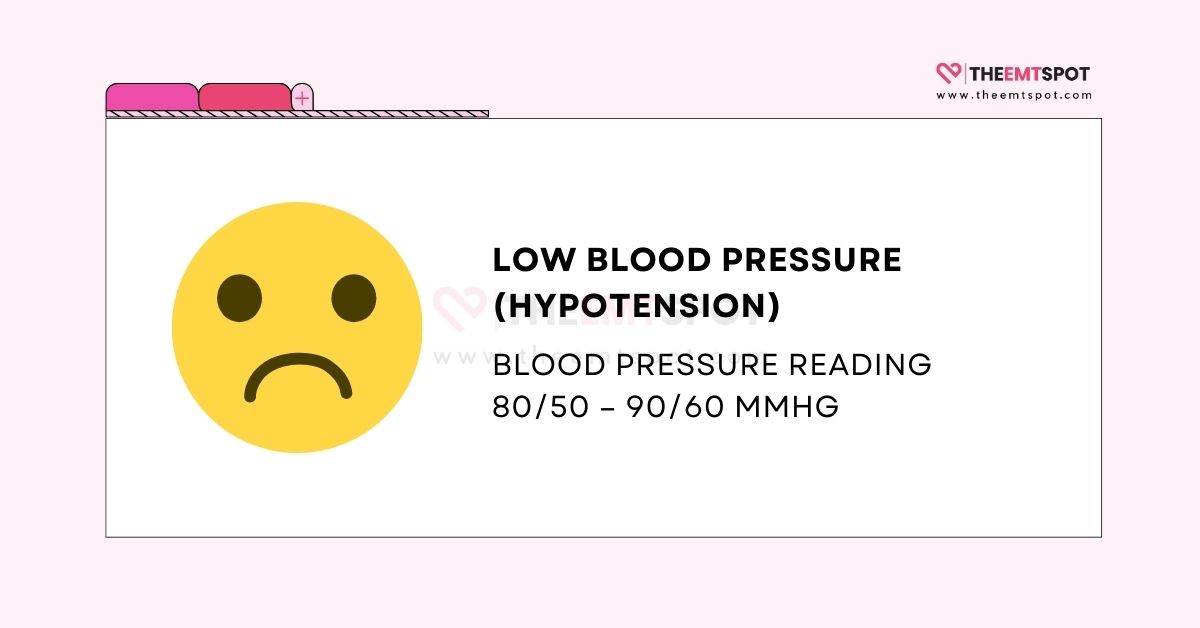
Below are some facts you need to know about hypotension.
- Causes: Hypotension can arise from dehydration, heart or endocrine issues, severe infections, significant blood loss, nutritional deficiencies, and certain medications like diuretics and beta-blockers.
- Symptoms: Common symptoms include dizziness or lightheadedness, fainting, blurred or narrowing vision, fatigue, nausea, and a lack of concentration.
- Dangers: Hypotension can be dangerous if not addressed, as it can lead to insufficient blood flow to the organs and brain, which could be life-threatening in some cases. So assess, evaluate, and if needed, call 911.
- Treatment: Treatment for hypotension varies based on its cause, and may include medication, dietary supplements, and lifestyle changes like modified diet, under medical supervision.
- Prevention and management: To manage hypotension, drink fluids, eat small frequent meals, avoid alcohol, stand up slowly, manage underlying conditions, and follow healthcare provider recommendations.
Normal Blood Pressure
Normal Blood Pressure refers to a state where blood pressure levels are within a standard range, ensuring adequate blood flow to the body’s vital organs.
According to Harvard Health Publications and the American Heart Association (AHA), a normal blood pressure reading is less than 120/80 mmHg.
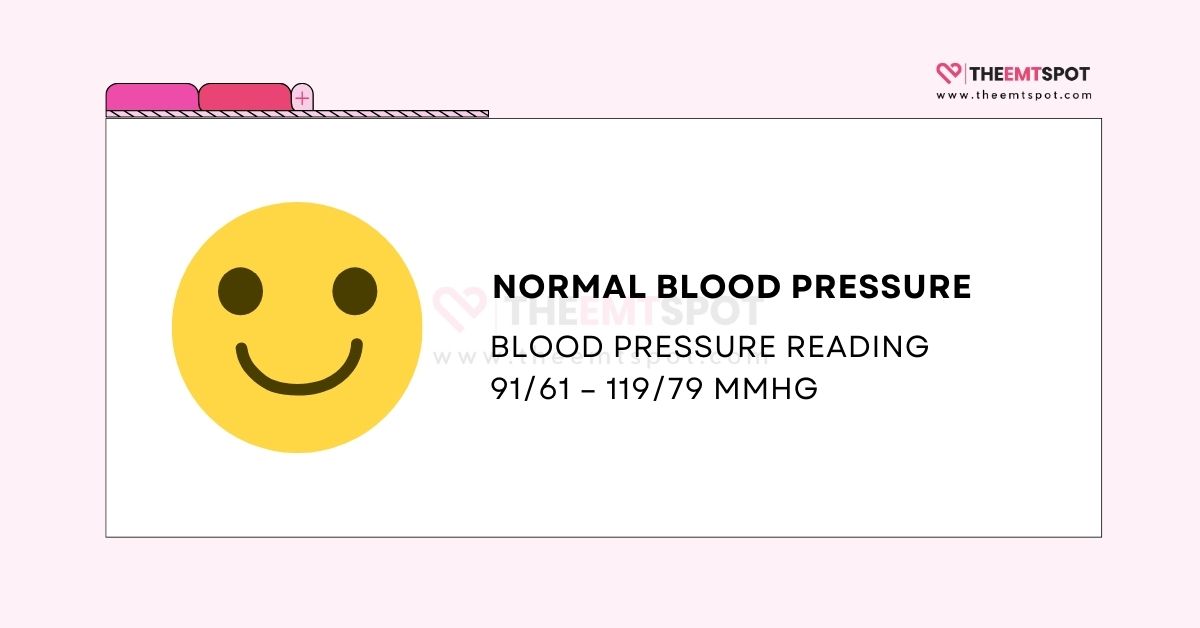
Maintaining normal blood pressure is crucial for overall cardiovascular health as it minimizes the strain on the heart and arteries, promoting better blood circulation throughout the body.
Some of the considerations regarding normal blood pressure are included below for your understanding.
- Maintenance: Adopting a heart-healthy lifestyle, including a balanced diet and regular exercise, can help maintain normal blood pressure levels.
- Monitoring: Regular monitoring can help individuals and healthcare providers detect any deviations from the normal range early on.
- Medical guidance: It’s advisable to follow medical guidance and have regular check-ups to ensure blood pressure remains within the normal range, especially if there are known cardiovascular risk factors.
Elevated Blood Pressure (Prehypertension)
Elevated Blood Pressure, also known as Prehypertension, refers to a condition where blood pressure levels are higher than the typical normal range but not high enough yet to be classified as hypertension.
A 2011 study by Zhang & Li published in the International Journal of Hypertension suggests that this stage is a precursor to hypertension, indicating a likelihood of progressing to high blood pressure if preventive measures are not taken.
The exact readings defining Prehypertension vary, but it’s often considered when blood pressure readings are between 120/80 mmHg and 129/80 mmHg.
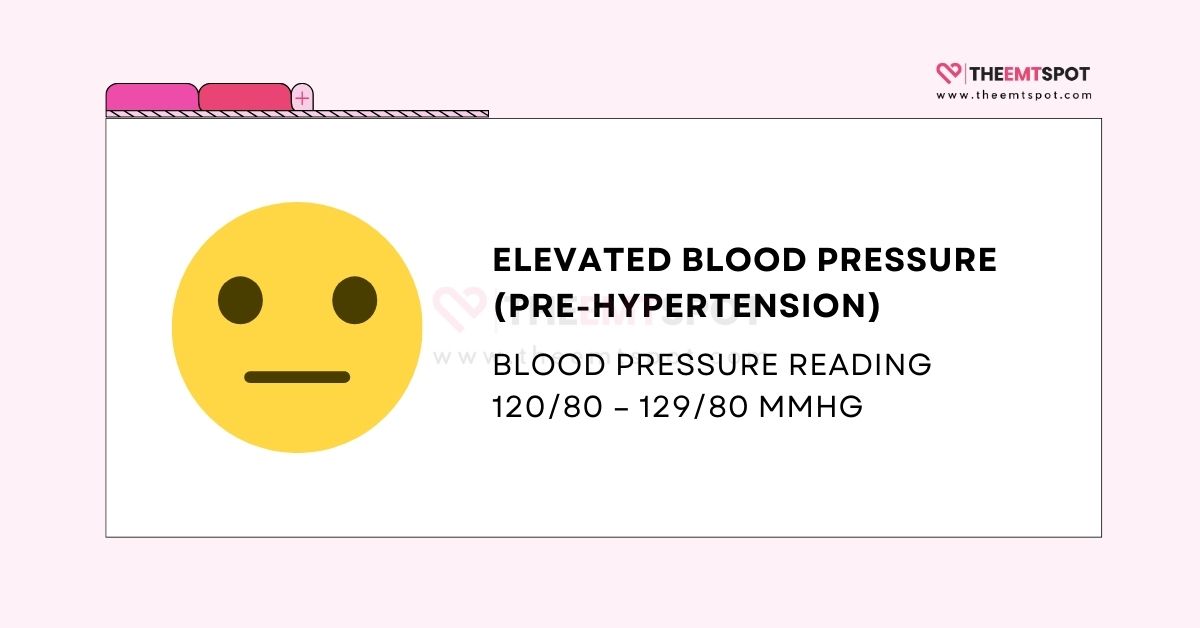
Below are some facts you need to know about prehypertension.
- Causes: Prehypertension can result from various factors including a family history of hypertension, a high-sodium diet, lack of physical activity, obesity, and excessive alcohol consumption.
- Symptoms: Often, there are no clear symptoms of prehypertension, making regular blood pressure monitoring crucial.
- Dangers: If left unaddressed, prehypertension can progress to full-blown hypertension, increasing the risk of heart disease and stroke.
- Treatment: Treatment may involve lifestyle modifications such as adopting a healthier diet, exercising regularly, reducing sodium intake, and limiting alcohol consumption.
- Prevention and management: Adhering to a healthy lifestyle, managing stress, regular exercise, and monitoring blood pressure can help manage prehypertension and prevent the progression of hypertension.
High Blood Pressure (Stage 1 Hypertension)
Stage 1 hypertension is a condition where blood pressure readings consistently range from 130-139 mmHg systolic or 80-89 mmHg diastolic.
The AHA considers this as an early warning sign of cardiovascular disorders and thus instructs patients with consistent readings to consult their doctors.
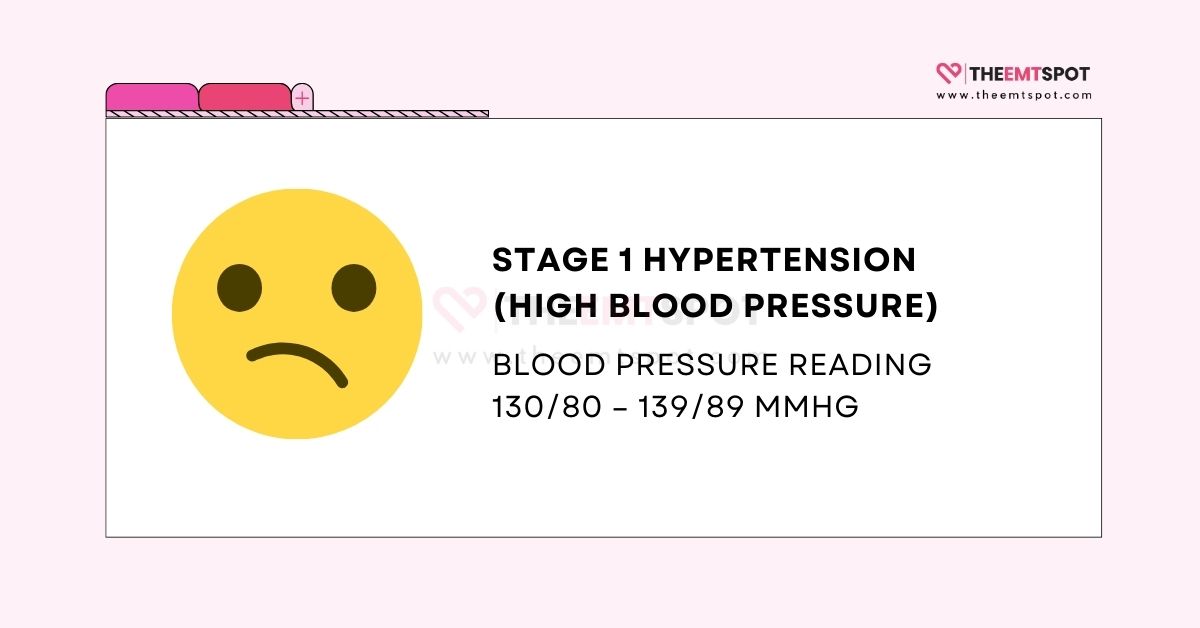
Some of the below facts will help you understand more about this stage of hypertension.
- Causes: Common causes include excessive salt intake, obesity, genetics, age, and lack of physical activity. Other factors like stress, kidney disease, and certain medications can also contribute.
- Symptoms: Often, stage 1 hypertension may not exhibit noticeable symptoms. Some people might experience headaches, shortness of breath, or nosebleeds, but these signs aren’t specific.
- Dangers: Even at this early stage, elevated blood pressure increases the risk of heart disease, stroke, and kidney problems. If unmanaged, it can progress to more severe stages of hypertension; however, it is not a medical emergency.
- Treatment: Treatment often involves lifestyle changes like a balanced diet and regular exercise. Doctors may also prescribe blood pressure-lowering medications depending on associated risks.
- Prevention and management: To prevent or manage stage 1 hypertension, reduce salt intake, maintain a healthy weight, exercise regularly, limit alcohol consumption, and manage stress effectively. Regular check-ups are crucial to monitor blood pressure.
High Blood Pressure (Stage 2 Hypertension)
Stage 2 hypertension is a more severe form of high blood pressure. It is characterized by blood pressure readings that consistently range from 140/90 mmHg or higher but less than 180/120.
At this stage, you must definitely seek medication care, because prolonged stage 2 hypertension can be a real trouble.
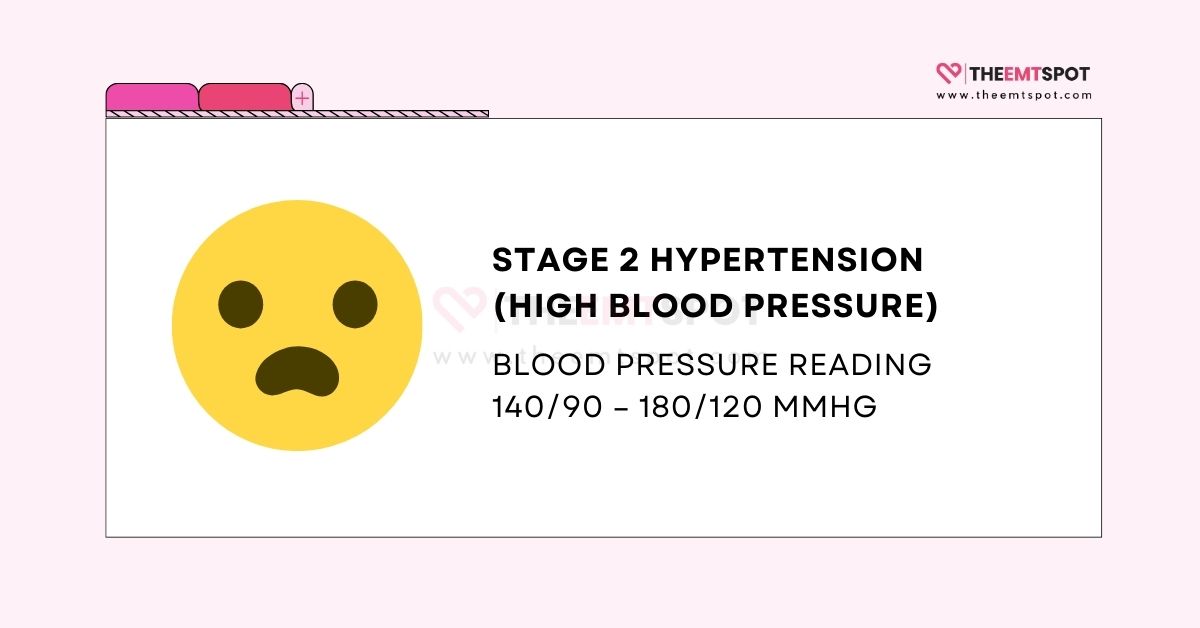
Some of the information mentioned below will help you to be more informed about this stage of hypertension.
- Causes: Similar to stage 1, the causes include excessive salt consumption, obesity, genetics, advanced age, and sedentary lifestyles. Chronic kidney disease, hormonal disorders, and some medications can also raise blood pressure to this level.
- Symptoms: While many people with stage 2 hypertension might still not experience symptoms, those who do might notice headaches, vision problems, chest pain, difficulty breathing, irregular heartbeat, and fatigue.
- Dangers: Stage 2 hypertension significantly elevates the risk of cardiovascular diseases like heart attack, stroke, and heart failure. You may want to observe, assess, and then seek medical care or call 911.
- Treatment: Treatment for stage 2 hypertension is more aggressive and usually involves a combination of blood pressure-lowering medications. Lifestyle interventions remain essential as well.
- Prevention and management: Prevention strategies are the same as for stage 1 – reducing salt intake, maintaining a healthy weight, regular physical activity, moderating alcohol use, and stress management. Those diagnosed should regularly monitor their blood pressure and adhere to prescribed treatments.
Hypertensive Crisis
A hypertensive crisis occurs when blood pressure spikes to dangerously high levels, specifically readings that exceed 180/120 mmHg.
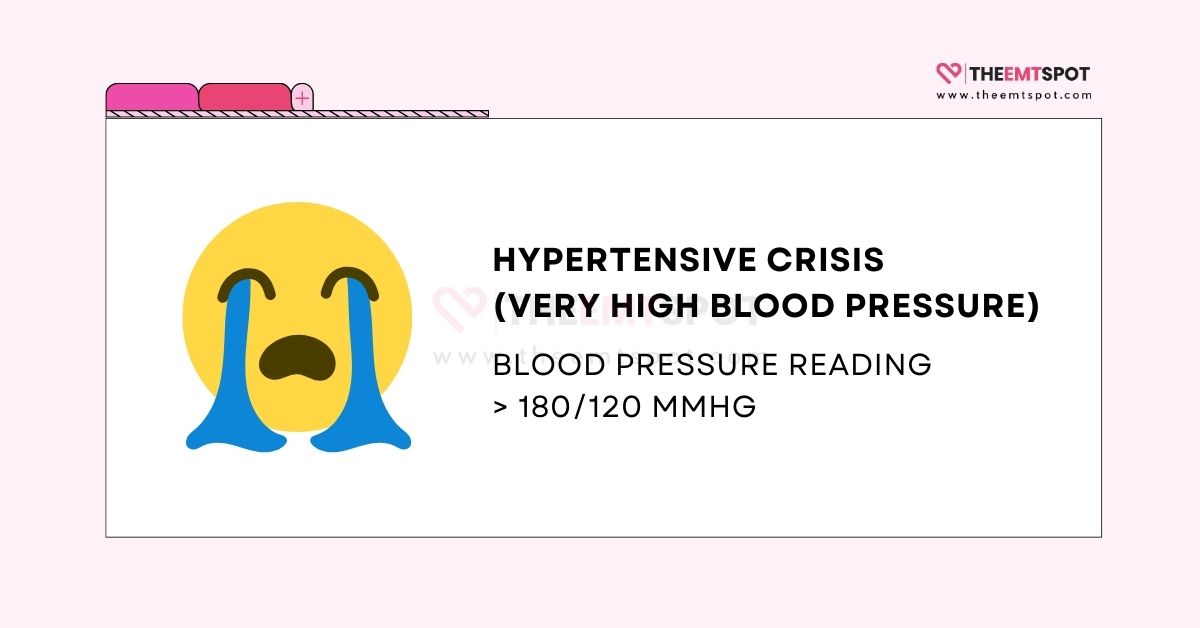
AHA identifies this as a medical emergency, and you may want to immediately alert your nearest person or call 911 if any of the symptoms mentioned below are felt.
It requires immediate medical attention and is categorized into two types: urgent and emergency.
- Causes: Causes can include skipping or stopping blood pressure medications, kidney failure, heart attack, stroke, or an adrenal gland problem. Drugs like cocaine or other stimulants, as well as some over-the-counter medications and supplements, can also trigger a crisis.
- Symptoms: Symptoms can vary but may include severe headache, shortness of breath, chest pain, back pain, numbness/weakness, difficulty speaking, vision problems, and severe anxiety.
- Danger: A hypertensive crisis can lead to life-threatening complications, such as fluid in the lungs (pulmonary edema), brain swelling, or organ damage. If it involves organ damage, it’s classified as a hypertensive emergency.
- Treatment: Immediate hospitalization is typically required. Intravenous (IV) medications may be administered to quickly reduce blood pressure. It’s crucial to determine if organ damage has occurred, as treatment approaches can differ.
- Prevention and management: Regular monitoring of blood pressure, adhering to prescribed medications, and immediate medical attention if experiencing symptoms or if readings are extremely high can help manage and prevent hypertensive crises. Avoiding known triggers and risk factors is also vital.
What is normal blood pressure by age and gender?
Normal blood pressure by age and gender can vary as reported by a 2001 study published in the Journal of Hypertension by AHA.
While 120/80 mmHg is often quoted as a standard benchmark for normal adult blood pressure, it’s essential to understand that normal ranges can vary based on factors such as age and gender.
The changes can vary between genders, such as between women and men, across various age categories like children to elderly, and various demographic conditions like ethnicity, race, physiological conditions, etc.
What is a normal blood pressure range for men?
The normal blood pressure range for men has to be less than 120/80 mmHg, and it can vary based on various factors including age, lifestyle, and overall health.
It’s worth noting that these are general guidelines, and individual variations exist.
Age Group | Normal Blood Pressure Range (mmHg) | Notes |
Young adults (20s-30s) | Around 120/80 mmHg | This range is often considered the standard for healthy blood pressure levels. |
Middle-aged adults (40s-50s) | Slightly above 120/80 mmHg | Many men in this age group average slightly above 120/80 mmHg. |
Senior women (60s and older) | Around 140/90 mmHg or higher | Further increase, especially in systolic pressure; readings around 140/90 mmHg can be common. |
What is a normal blood pressure range for women?
The normal blood pressure range in women should be ideally less than 120/80mmHg for a healthier woman; however, it can fluctuate based on age, health, and other factors.
Dr. Jennifer Wong, M.D., medical director of non-invasive cardiology at Memorial Care Heart and Vascular Institute mentioned in a health journal about the increased risk of cardiovascular events in women.
According to Dr. Wong:
“An observational study published in Circulation earlier this year suggested an increased risk of myocardial infarction and heart failure in women starting at systolic blood pressures of greater than 110 mmHg,”
While hormonal changes throughout a woman’s life, especially during pregnancy and menopause, can influence these readings, below are the clinical standards for a woman.
Age Group | Normal Blood Pressure Range (mmHg) | Notes |
Young adults (20s-30s) | Around 120/80 mmHg | This range is generally considered normal and is often used as a baseline for healthy blood pressure. |
Middle-aged adults (40s-50s) | Around 120/80 mmHg | Hormonal changes can lead to fluctuations in blood pressure, though it might still hover around the standard range. |
Senior women (60s and older) | Around 140/90 mmHg or higher | Potential for a rise, especially in systolic pressure; readings similar to men in the same age group can be observed, indicating an increased likelihood of hypertension. |
What is a normal blood pressure range for children?
Normal blood pressure ranges for children typically start at lower levels than adults and gradually rise as they grow. It can vary based on their age, sex, and height.
Therefore, it’s essential to compare a child’s readings with age, gender, and height percentiles to determine if their blood pressure is within a healthy range.
Age Group | Average Blood Pressure Range (mmHg) | Notes |
Infants (0-12 months) | 75/50 to 90/65 | Blood pressure starts to develop to normal ranges as the infant grows. |
Toddlers (1-2 years) | 80/50 to 100/70 | Blood pressure gradually increases with age and physical growth. |
Preschoolers (3-5 years) | 85/55 to 105/75 | Blood pressure continues to increase, aligning closer to adult levels as the child grows. |
School age (6-9 years) | 90/60 to 120/80 | Blood pressure may start to be influenced by external factors such as physical activity and emotional state. |
Pre-teens (10-12 years) | 95/65 to 125/85 | Hormonal changes and rapid growth spurts may contribute to fluctuations in blood pressure. |
Teenagers (13-18 years) | 100/70 to 130/90 | Hormonal changes, lifestyle, and physical growth continue to influence blood pressure, with a wider range of normal values. |
What is a normal blood pressure range for young adults?
Normal blood pressure ranges for young adults, typically those in their late teens to late 20s or early 30s should be less than 120/80 in a healthy condition.
While individual variations exist, there are general benchmarks considered healthy for this age group.
This age category of individuals is expected to maintain the healthiest levels of all age groups to their evolutionary advantage, and the cardiovascular risk tends to increase as they age older.
It’s important to note that factors such as stress, diet, physical activity, and genetics can influence these numbers.
Blood Pressure Category | Blood Pressure Range (mmHg) | Notes |
Normal Blood Pressure | Below 120/80 | Ideal blood pressure range indicating good heart health. |
Elevated Blood Pressure | Systolic 120-129 / Diastolic <80 | A warning stage where individuals may be at risk of developing hypertension if not managed. |
Hypertension Stage 1 | Systolic 130-139 / Diastolic 80-89 | At this stage, lifestyle modifications or medication may be recommended to lower blood pressure. |
Hypertension Stage 2 | Systolic ≥140 / Diastolic ≥90 | More severe hypertension that typically requires medication and lifestyle changes for management. |
What is the normal blood pressure range for the elderly?
The normal blood pressure range for elderly individuals, typically those aged 65 and older should be less than 120/80 in an ideal scenario.
Due to age-related changes in the cardiovascular system, blood pressure might naturally trend higher compared to younger age groups.
For many elderly individuals, readings up to 140/90 mmHg might still be considered acceptable, especially if lowering them causes side effects or if the individual has been stable at those numbers for a long time without complications.
Nonetheless, it’s essential to consult with healthcare professionals for individual assessments and recommendations.
Blood Pressure Category | Blood Pressure Range (mmHg) | Notes |
Normal Blood Pressure | Below 120/80 | Ideal range, though slightly higher readings may be acceptable in the elderly without other risk factors. |
Elevated Blood Pressure | Systolic 120-129 / Diastolic <80 | Elevated blood pressure may be an early sign of cardiovascular risk. |
Hypertension Stage 1 | Systolic 130-139 / Diastolic 80-89 | At this stage, medical intervention and lifestyle modifications may be recommended to manage blood pressure. |
Hypertension Stage 2 | Systolic ≥140 / Diastolic ≥90 | Indicates more severe hypertension and typically requires medication and lifestyle changes for management. |
What is a normal blood pressure range during pregnancy?
The normal blood pressure range during pregnancy is expected to be less than 120/80; however, a woman’s body undergoes various physiological changes leading to variations in some cases.
Blood pressure can fluctuate throughout the pregnancy, and certain elevations might indicate complications; hence necessitating regular monitoring.
Any sudden spike or unusual symptoms should be reported to healthcare professionals immediately.
Pregnancy Stage/Condition | Blood Pressure Range (mmHg) | Notes |
First Trimester | Below 120/80 | Blood pressure usually remains close to pre-pregnancy levels or might slightly drop. |
Second Trimester | Varies, often decreases | Blood pressure often decreases, reaching its lowest point around the middle of pregnancy. |
Third Trimester | May return to first trimester levels or slightly higher | Blood pressure begins to climb again, typically returning to first-trimester levels or slightly higher. |
Elevated Blood Pressure | Systolic 120-129 / Diastolic <80 | Consistently in this range during pregnancy may indicate elevated blood pressure. |
Hypertension | At or above 140/90 | Consistent readings at or above this range indicate hypertension during pregnancy. |
Preeclampsia | High Blood Pressure | A pregnancy complication characterized by high blood pressure and potential damage to organs, often the liver and kidneys, typically arising after the 20th week of pregnancy. |
What is an average blood pressure by race/ethnicity?
Average blood pressure by race/ethnicity can vary based on the demographics as highlighted by Dr. Anum Saeed and colleagues from the American College of Cardiology in a 2020 expert analysis in their white paper report.
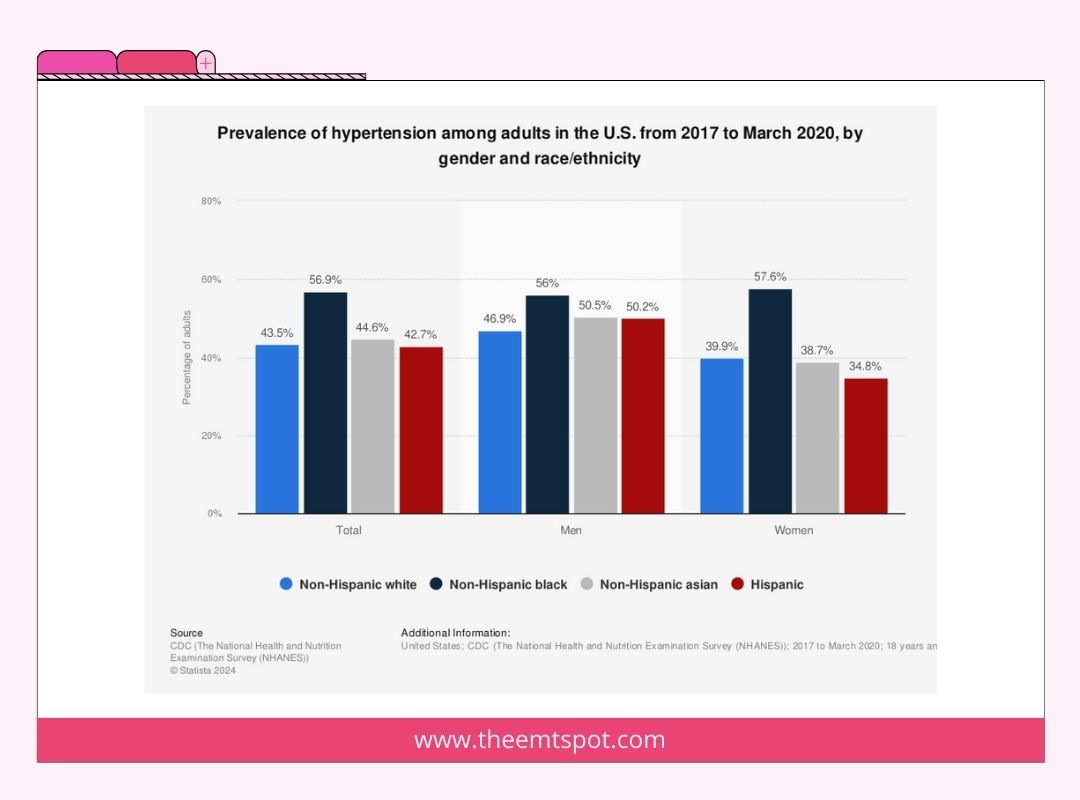
Genetics, socioeconomic factors, diet, stress, and access to healthcare can all play roles in these disparities.
However, it’s essential to approach this topic with caution, avoiding overgeneralizations and understanding individual factors and lifestyles.
A study by Rahul and the team from the Smith Center for Outcomes Research in Cardiology, Division of Cardiology, MA published in AHA journal conducted a detailed analysis of average blood pressure variation among various ethnic groups in the US which is influenced by the genetic background.
Systolic Mean (mmHg) | Diastolic Mean (mmHg) | |
White Americans | 135.9 | 72.8 |
Hispanic Americans | 139.6 | 76.1 |
Black Americans | 141.0 | 76.6 |
Asian Americans | 140.3 | 76.3 |
Others | 134.7 | 75.8 |
What is normal blood pressure for pets?
The normal blood pressure for pets can range anywhere from 110/60 to 170/100 depending on the species of the animal that you have.
Just like in humans, blood pressure is a vital health parameter for pets, reflecting the health of their cardiovascular system.
The norms vary among different species and breeds, and measuring blood pressure in pets requires specific equipment and techniques.
Below are some of the blood pressure readings of common pets that most of us might be having.
Animal Group | Blood Pressure Range (mmHg) | Notes |
Dogs | 110-160/60-100 | Large-breed dogs might have slightly higher values, while small-breed dogs might have lower values. |
Cats | 120-170/55-100 | Less emphasized in diagnostic settings. |
Birds and Exotic Pets | Varies | Blood pressure norms can vary widely. Specific reference values might be hard to determine due to limited research, and measurement may not be as common as in dogs and cats. |
Why it is important to monitor blood pressure?
Monitoring blood pressure is important because it gives you a quick idea about your heart health. The significance of this regular monitoring cannot be understated, as highlighted by the reasons below.
- Early detection: Regular monitoring can detect hypertension or other cardiovascular conditions early, even before symptoms become evident. Early detection can lead to timely interventions, reducing the risk of complications.
- Assess treatment efficacy: For individuals on antihypertensive medications, tracking blood pressure ensures that the treatment is effective and adjustments can be made if necessary.
- Prevent serious health issues: Uncontrolled high blood pressure can lead to critical health problems, including heart attacks, strokes, kidney disease, and more. Monitoring helps in preventing these complications.
- Understand risk factors: Regularly observing blood pressure can help individuals understand how lifestyle choices like diet, exercise, stress, and smoking influence their readings.
- Manage other health conditions: Conditions such as diabetes, kidney diseases, and certain heart conditions can impact blood pressure. Monitoring helps in the comprehensive management of these conditions.
- Avoid hypertensive crisis: Very high blood pressure readings can lead to a hypertensive crisis, which requires emergency treatment. Regular checks can help avoid such situations.
- Maintain optimal health: Even for individuals without a known risk of hypertension, occasional checks can provide insights into cardiovascular health, encouraging a proactive approach to wellness.
- Encourage lifestyle modifications: Recognizing patterns in blood pressure readings can motivate individuals to make beneficial lifestyle changes, such as adopting a healthier diet, engaging in regular exercise, and managing stress.
How to take blood pressure at home?
For taking blood pressure at home you have to make sure you follow below mentioned steps.
- Select a monitor: Choose a reliable blood pressure monitor suitable for home use. Devices like the Oxiline Pressure X Pro or CheckMe BP2 come highly recommended.
- Position yourself: Sit comfortably at a table, placing your arms level with your heart. Make sure your feet are flat on the ground and your back is supported.
- Place the cuff: Position the cuff on your bare upper arm, ensuring it’s snug but not too tight.
- Take a moment: Relax for about 5 minutes before initiating the reading to ensure accurate results.
- Measure: Activate your monitor to take the reading. It’s wise to take two or three readings, a minute apart, and then average the results for the most accurate representation.
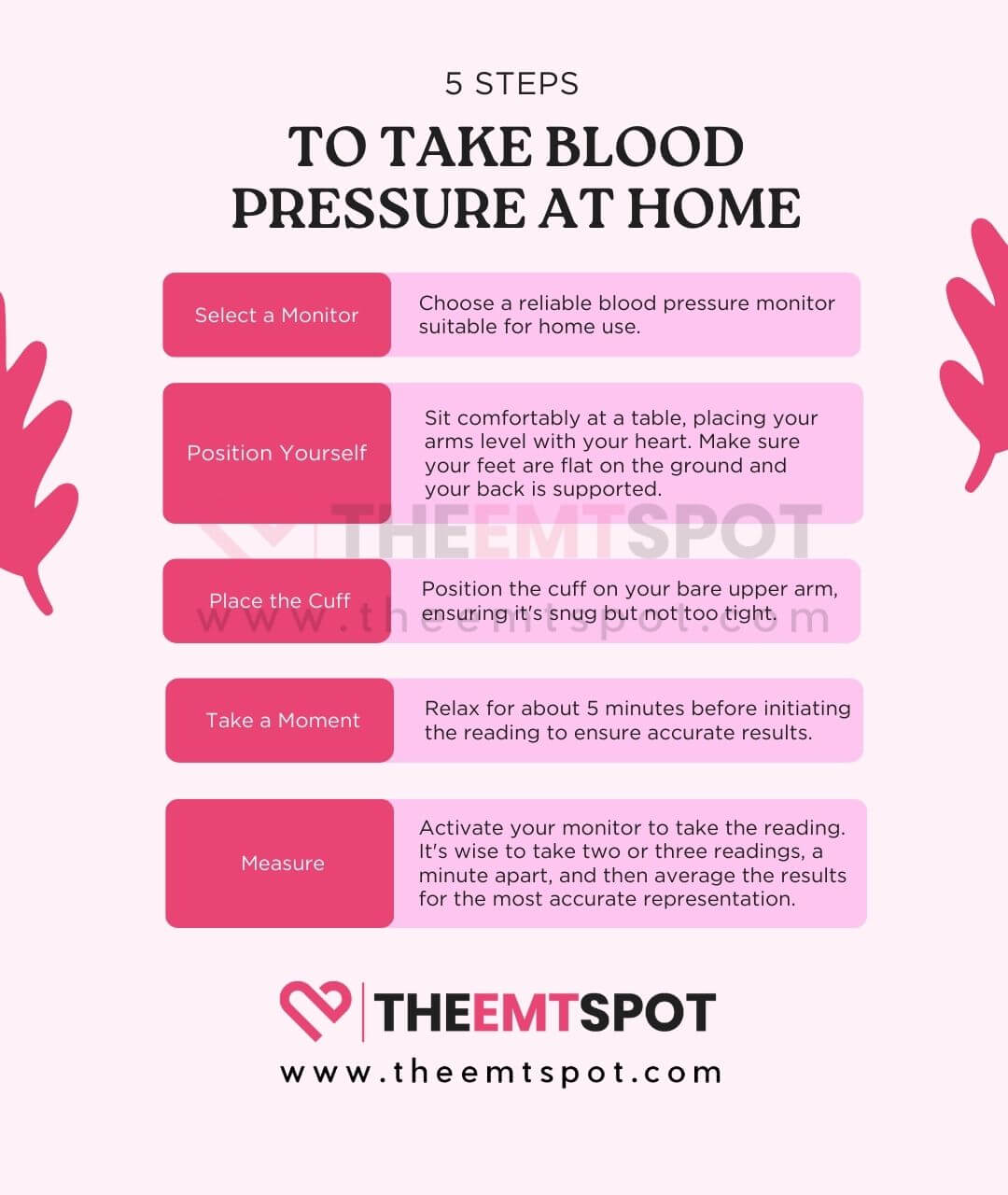
Measuring blood pressure requires a careful approach to ensure you follow all the nuances correctly, making it as accurate as the one from your doctor.
What are the best and most accurate blood pressure monitors?
Best blood pressure monitors for accurate at-home measurements are made by three brands: Oxiline, CheckMe, and QardioArm. A detailed comparison of these three products is given below.
Oxiline | Checkme | QardioArm |
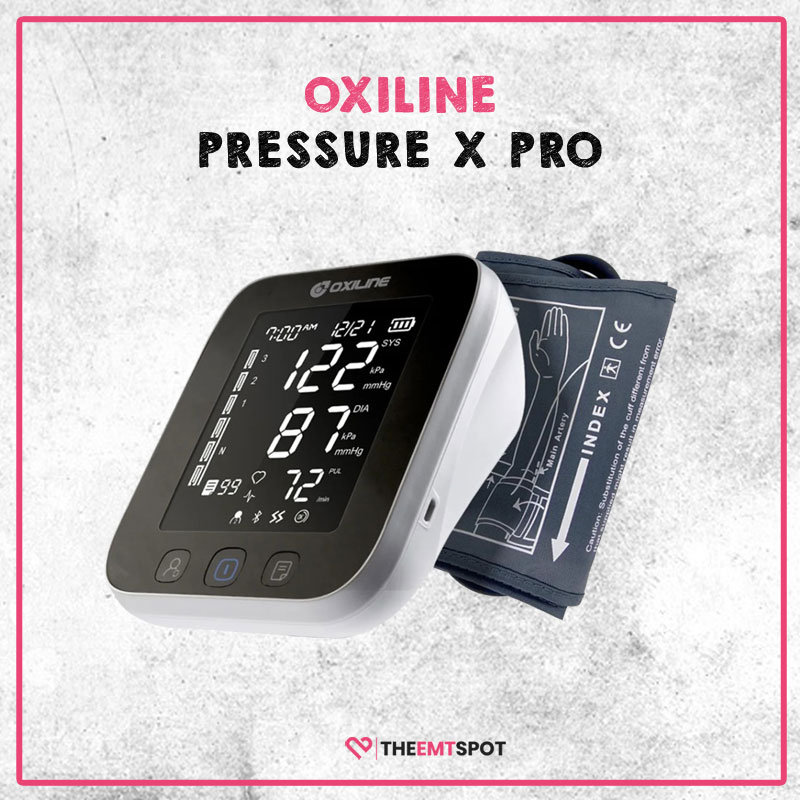 | ||
|
|
|
Oxiline, CheckMe, and QardioArm are the best performers in the market.
However, Oxiline Pressure X Pro stands a league apart from others, thanks to its years of innovation.
In fact, reviews praise this product highly, and some clinicians recommend it to their patients as well.
Second in the league is CheckMe with their BP2 and BP2A, both of which are smart monitors that can integrate with your smartphone.
Some people prefer comprehensive coverage of cardiac health, and CheckMe products would be a great choice for those.
How to lower blood pressure naturally?
To lower blood pressure naturally, the strategies mentioned below might be beneficial, provided you follow them correctly and promptly.
- Dietary changes: Reduce sodium, opt for low-sodium choices, consume potassium-rich foods (e.g., bananas), increase fiber intake with whole grains, fruits, and vegetables, and consider the DASH diet emphasizing fruits, vegetables, and low-fat dairy.
- Physical activity: Engage in regular exercise (150 mins of moderate-intensity or 75 mins of vigorous-intensity aerobic activity weekly), incorporate strength training at least twice a week.
- Lifestyle choices: Limit alcohol and caffeine, manage stress through relaxation techniques and adequate sleep, and maintain a healthy weight. Smoking is the number one risk factor for cardiovascular disease. So, completely eliminate it from your life.
- Stay hydrated: Drink plenty of water and keep yourself hydrated throughout the day.
- Consider natural supplements: Omega-3 fatty acids, garlic, and flaxseed may help lower blood pressure, but consult a healthcare professional before use.
1f you are on a journey toward natural heart care, one essential aspect you won’t want to overlook is understanding the baseline figures for blood pressure.
In the following section, you will learn how to download a printable version of a blood pressure chart.
Where to find a printable blood pressure chart to monitor your readings?
In the digital age, having tangible tools for health management can offer a sense of control and clarity.
A printable blood pressure chart serves as a handy and accessible way to track and visualize blood pressure readings over time.
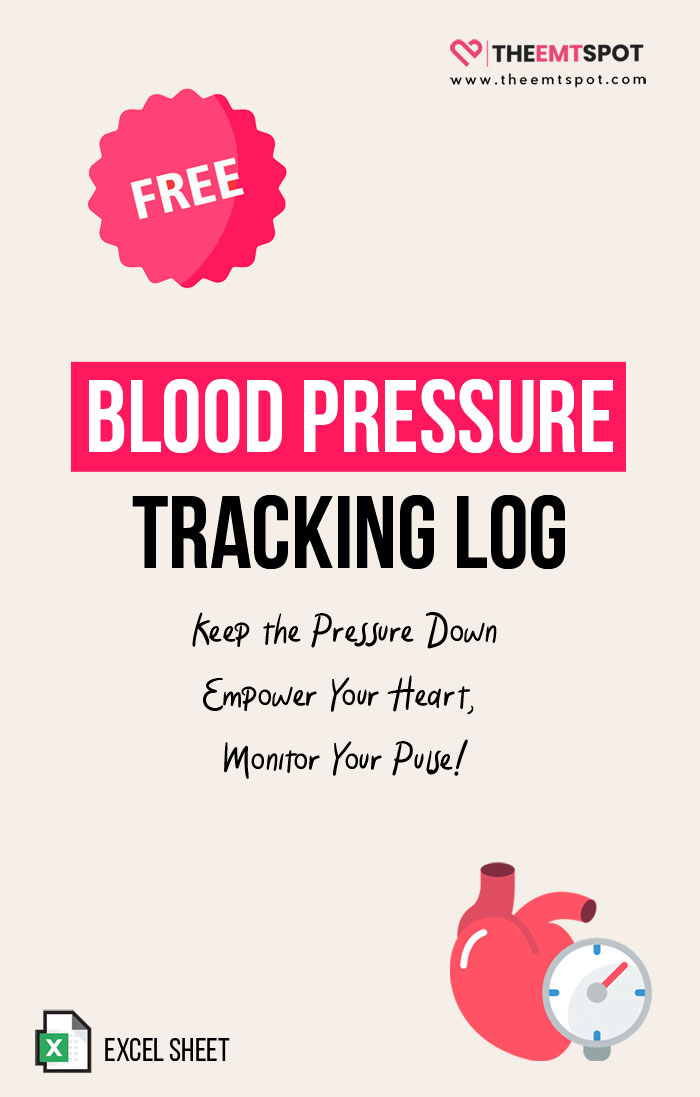
Whether for personal use, to share with a healthcare provider, or to assist a loved one, knowing where to find these charts can be invaluable.
Subscribe to our newsletter below to download the printable blood pressure chart directly to your inbox.
More in this topic

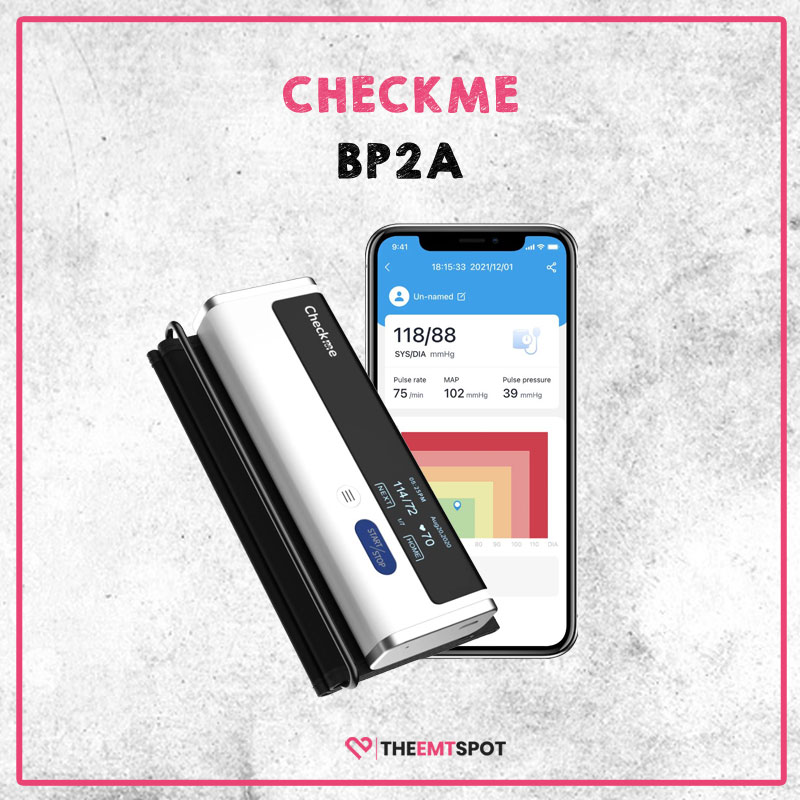









 Robin Backlund is a dedicated journalist and a medical student who has written several articles and essays exposing the falseness and hollowness of online resources in the medical science niche.
Robin Backlund is a dedicated journalist and a medical student who has written several articles and essays exposing the falseness and hollowness of online resources in the medical science niche.